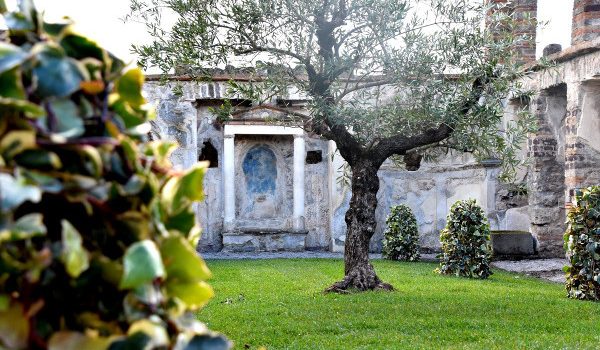The House of the Large Fountain, the House of the Anchor and the Temple of Isis all reopen to the public
THE HOUSE OF THE LARGE FOUNTAIN, THE HOUSE OF THE ANCHOR AND THE TEMPLE OF ISIS
REOPEN TO THE PUBLIC ON THE 21ST DECEMBER
Following restoration and maintenance interventions, the return of finds to their historic locations, the rearrangement of the green areas and research excavations
The House of the Large Fountain, the House of the Anchor and the Temple of Isis all reopen to the public on the 21st December, following restoration and maintenance interventions, the rearrangement of green areas and research excavations, yet they also bear witness to the revival of their historical layouts.
In the House of the Large Fountain, following on from restoration interventions, the historic arrangement of the fountain area has been revived - in line with the Open-Air Museum project which has already been applied to various Pompeian domus - and here the copy of the putto with a dolphin statuette has been returned to its original location.
The House of the Anchor on the other hand, with its original double-level layout, will display its beautiful garden on the lower level, which has been rearranged thanks to a restoration and maintenance-based intervention on the green area, carried out according to a low-impact project, with a historical-botanical basis applied to the choice of species.
The Temple of Isis, however, in addition to undergoing general maintenance and restoration interventions on the decorative apparatus, has seen new archaeological investigations as part of the 'excavations and research' project which has been promoted by the Park. During one particular study, traces of a sacrifice with both plant-based and animal offerings emerged, which have furthered our understanding of the rituals practiced in the sanctuary.
The original layout of the House of the Large Fountain dates to the early 2nd century BC, but only in the 1st century AD was the large apse-fountain - which today gives the dwelling its name - constructed against the back wall, decorated with mosaics and shells, and adorned with two marble theatrical masks. At the centre of the fountain lies a cylindrical stand with a central hole, which was devoid of decorative elements when it was discovered between 1826 and 1827. At some point between the late nineteenth and early twentieth century, a copy of a putto with a dolphin which had been discovered in 1880 in the garden of the House of the Arches, was positioned on the base at the centre of the fountain; this arrangement, which was perhaps conceived in a similar manner to the nearby House of the Small Fountain, at the centre of which is a statuette of a putto with a goose, was later maintained for several decades during the twentieth century. The arrangement presented today thus restores the historic layout as well as the established image of the domus from the last century.
The House of the Anchor takes its name from the anchor depicted in the mosaic at the entrance, which symbolised the peace and safety that the dwelling offered to its inhabitants. It has a layout which is entirely original at Pompeii. Indeed the back is laid out across two levels at different heights: the upper level is centred around a wide terrace, onto which three large reception rooms face. These rooms have floors decorated with mosaics, the preparatory drawing of which is still preserved in one case; the lower level is occupied by a garden, around which runs a covered portico with columns. The decorative elements of the dwelling underwent a restoration intervention in 2015, as part of the Great Pompeii Project.
The Temple of Isis was dedicated to the ancient cult (of the mystery kind, i.e reserved for initiates only) of the Egyptian goddess, which began to spread across the Mediterranean in the 3rd century BC, riding on its message of hope for a life beyond death. Indeed, according to the myth, Isis recovered the body parts of her consort Osiris, who was slain and dismembered by Seth, and rebuilt him and gave him life once more. The temple is located on a high podium at the centre of a porticoed courtyard; in the space at the front, one finds the altar, the pit for offerings and a small building (purgatorium) inside which ran a staircase which lead to a basin where water could be drawn - water said to have come directly from the Nile. Behind the temple was a large room dedicated to the meetings of initiates (ekklesiasterion), while in a smaller one (sacrarium) paintings were visible which narrated episodes from the myth of the goddess.
The decorative elements, sculptures and furnishings which were discovered in the sanctuary are displayed in the National Archaeological Museum of Naples, but it is possible to partially relive the original effect thanks to the return of certain copies of frescoes and statues to their original sites.
In the ekklesiasterion the visitor can, via multimedia devices, obtain further information on the cult of Isis.


